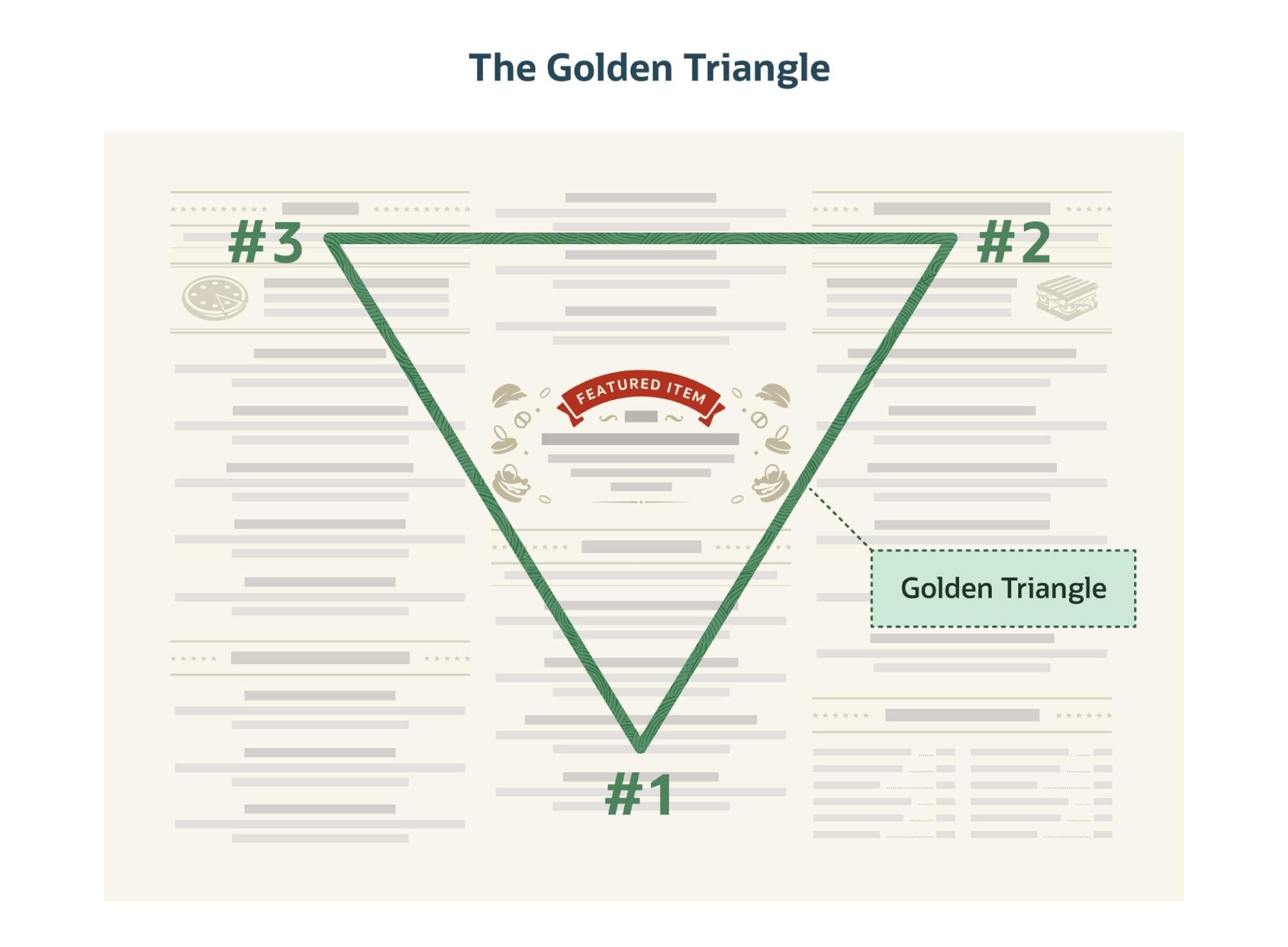As restaurants wrestle with the ongoing costs of inflation and supply chain disruptions, many find themselves in a frustrating catch-22: They can either raise menu prices across the board to offset higher food costs or can cut portion sizes or degrade ingredient quality. Either way, they risk disappointing or angering customers, who may decide to take their business elsewhere.
However, another option is menu engineering, which addresses these challenges and more. Menu engineering is a data-driven approach that restaurants take to adjust their menus based on which dishes are the most popular and profitable, all while keeping diners satisfied — and well fed. This article details how menu engineering works, 10 key benefits, how to classify and calculate the profitability and popularity of menu items, and the behind-the-scenes role that menu psychology plays.
What Is Menu Engineering?
Menu engineering is the systematic analysis of current and historical sales data about which items are most popular with customers and how much they contribute to revenue and profit, restaurants can make strategic decisions regarding the selection, pricing and positioning of every offering. All of this helps design the “perfect” menu, which involves more than improving its layout, wording and photos. Ultimately, menu engineering aims to improve a restaurant’s profit margins and overall financial performance.
Key Takeaways
- Menu engineering involves analyzing profitability and popularity data to optimize menu item selection and placement.
- Effective menu design, such as the use of the “golden triangle,” imagery and descriptive language, can influence customer choices.
- Restaurants should regularly monitor and adjust their menus to adapt to changing costs, trends and customer preferences.
- The right technology and data analysis tools can streamline the menu-engineering process.
Menu Engineering Explained
The most successful menu-engineering efforts begin with an analysis of the current menu’s performance based on metrics like sales volume, food cost and menu prices. Together, this data can guide decisions about whether to add, delete or modify menu items, as well as which ones to highlight through specific design techniques.
From a cost-management perspective, menu engineering weighs increasing menu pricing against decreasing portion sizes and ingredients for each dish served. Menu engineering also takes a holistic approach, for example, by finding ways to create more dishes with common ingredients in order to streamline prep work, reduce waste or make it possible for a restaurant to obtain better discounts for volume purchases.
Operationally, menu engineering can help restaurants determine how many different menu items they can realistically support. As restaurant operators double down on cost containment in light of higher food prices, deleting or streamlining menu offerings can be an increasingly important strategy. Indeed, 76% of restaurant operators said that their average food costs increased in the past year, and 53% said they had removed items from the menu to adapt to these increases, according to the National Restaurant Association (NRA).
As organizations lay the groundwork for their menu-engineering efforts, they’ll also want to take into account:
- Ingredient and recipe trends.
- Emerging supply chain issues or seasonality concerns that could impact the profitability of certain dishes.
- The operational pressure that the current mix of menu items puts on different kitchen stations.
- Feedback from customers about the selections on the menu, quality and perceived value of items.
The science of menu engineering is also balanced by a bit of art — literally — including the menu’s design and organization, the words used to describe menu items and the photos, images and other stylistic devices employed to catch diners’ attention and influence selection.
What Is Menu Psychology?
Menu psychology capitalizes on cognitive science — the study of how the mind and its mental processes help humans make decisions — to guide a restaurant’s menu-related decisions. Ideally, the application of menu psychology can influence customers to order the most profitable dishes and even enhance brand perception. Here are some ways menu psychology can assist menu engineering.
Layout choices: When presented with a menu, most customers will first look at the middle of the page, then the top right, then the top left and downward from there. In menu psychology parlance, this is referred to as the “golden triangle” — the area where smart restaurants feature items with the highest profit margins.

Restaurants should consider placing one or more high-profit dishes within the coveted golden triangle. Anchoring and decoys: The placement and pricing of certain menu items can influence the perception of other items around them. For example, positioning, or “anchoring,” the highest priced items at the top of a menu can sway customers into perceiving the items below them as better priced. Some restaurants even include ultra-expensive “decoy” dishes that they rarely sell to stimulate orders of the lower-priced (and presumably more profitable) items positioned next to them.
Price presentation: Determining how much to charge for dishes is a critical step in the menu-engineering process. However, restaurants will also need to figure out how to present those prices. For example, “charm pricing” calls for using a price slightly below a whole number — $24.95 vs. $25 — which can psychologically lead cost-conscious customers to believe they’re getting a bargain. Conversely, rounded, even numbers convey a more upscale experience, making their use appealing to a higher-end restaurant. Some exclusive restaurants even choose to eliminate the currency symbol in front of an item’s cost or spell out the prices in words as a way to psychologically communicate a luxurious dining experience.
Evocative descriptions: Menus that effectively tell the story of menu items — enticing the senses with adjectives about smells, textures and flavors — are psychologically instrumental in sales. Descriptions that evoke nostalgia also tend to perform well. For example, a bowl of “Grammy’s Matzo Ball Soup” is more likely to entice a customer than “Chicken Soup with Matzo Balls.”
Imagery: Studies have shown that the strategic placement of photography, illustrations, icons and other design elements can encourage diners to order specific menu items, perhaps even convincing them to try something new. They’re also a great way to stimulate customers’ appetites or be the tie-breaker between two tempting choices. From a restaurant’s perspective, adding high-quality imagery to its menu can help increase sales of higher-margin dishes, which, in turn, plumps up diners’ average check size, boosts brand image and encourages return visits.
What Are the Benefits of Menu Engineering?
By intelligently crafting menu selections using current and historical sales data, food cost and some simple psychological tricks, restaurants can realize significant financial and operational benefits. The following list of benefits is why a restaurant should consider menu engineering as a core competency for business success.
Maximize profitability: Menu engineering is a systematic process that examines the popularity and financial performance of each menu item so that restaurants can create a selection that maximizes their profitability. Product mix (PMIX) reports that track menu performance come in handy here, guiding operators to easily identify what to add, delete or change to improve their margins.
Improve customer satisfaction: By designing menus that are in tune with item performance and feedback provided by customers in “voice of the customer” surveys and polls, restaurants can ensure that their selections delight loyal regulars and appeal to open-minded newcomers.
Optimize menu design: It’s not surprising that a restaurant would want to guide customers’ attention to the most popular and profitable dishes on its menu. Menu design that factors for strategic item placement, menu flow, price presentation and thoughtful use of imagery, color and typography can help achieve that goal.
Control costs and enhance efficiency: A methodical, data-driven menu-engineering process can help restaurants streamline their selections to reduce or even out the workload among different kitchen stations during the course of a busy shift. To control or bring down costs, restaurants can also reduce portion sizes or the number of ingredients. A solid menu can also support inventory management practices that reduce food costs by, for example, minimizing waste due to expiration, overstocking or shrinkage.
Increase upselling opportunities: As they dive into sales data during the menu-engineering process, restaurants can uncover opportunities to upsell premium dishes or menu-item combinations. For example, a market basket analysis, which examines items that are commonly ordered together, can make the case for keeping a low-profit item on the menu if it’s consistently ordered with a high-profit item. Servers should be trained to make such upsell suggestions as well. Another smart move is to use this insight to move certain items closer to each other on the menu.
Provide competitive advantage: Menu engineering allows restaurants to select items and ingredients that resonate best with customers’ tastes, which ultimately helps them stand out in a crowded marketplace. In addition, restaurants that regularly remove low-profit, low-popularity items from their menus can make room for experiments with trendy new dishes or ingredients that tickle diners’ taste buds.
Support data-driven decision-making: Menu engineering is defined by its use of menu performance and cost data to lead restaurants toward informed decision-making regarding the selection, portioning and pricing of menu items — all with the guest experience in mind.
Promote continuous improvement: A continuous process of optimizing the menu and tracking menu performance helps restaurants understand how their decisions impact demand and financials. For example, through ongoing menu engineering, a restaurant can monitor how price changes affect demand (aka “demand elasticity”) for specific menu items and make additional adjustments, if needed.
Guide menu selection through highlighting: Menu engineering requires operators to carefully analyze the performance of each menu item to understand both their profitability and popularity. The results can help them decide which dishes — typically the most profitable — to highlight on the menu, using specific design techniques, such as placement in the golden triangle of eye-gaze movement, to draw attention to them.
Ensure ongoing operational optimization: Establishments that engage in menu engineering not only balance their menus according to the profitability and popularity of dishes, but they also take into account the operational strain the menu selection may cause in the kitchen. For example, a kitchen that wants to take some pressure off of its busy fryer station during dinner service might try adding a few enticing, lower-priced items that the grill and sauté stations can prepare.
The 4 Menu-Engineering Categories Explained
Menu engineering is a journey that can take many directions, but one of the most non-negotiable stops along the road should be menu performance categorization. Menu items are classified in one of four industry-standard ways, based on their popularity and profitability:
Stars: High Profitability and High Popularity
These menu items are winners and should be kept. A restaurant might even consider a modest price increase. For this category especially, this pricing adjustment will reach the bottom line fastest due to items’ high popularity and profitability.
Puzzles: High Profitability but Low Popularity
Puzzles are the menu items that restaurants would like to sell more of. Highlighting or repositioning these items on the menu, incorporating them into a promotion or beefing up their descriptions are all possible ways to increase sales volume.
Plow Horses: Low Profitability but High Popularity
These menu items always sell well but are not very profitable. Ways to improve margin include a price increase, ingredient substitution, portion reduction or a combination of maneuvers.
Dogs: Low Profitability and Low Popularity
Every day that dogs remain on the menu, profit is left on the table. Dogs should be removed from the menu immediately, regardless of whether they’re a chef’s signature dish or a staff favorite.

Menu items are placed into one of four categories, based on their profitability and popularity.
Creating a Profitable Restaurant Menu
Engineering a consistently profitable restaurant menu requires careful data analysis to separate the stars from the puzzles from the plow horses from the dogs. Here are the steps restaurateurs can follow as they embark on the process.
Select an effective time frame for menu analysis: The period of time to analyze will depend on how often a restaurant wants to refresh its menu and to what extent. For example, an establishment that updates its menu once a year would likely want to analyze its past six to 12 months of data for a deep understanding of long-term trends. A restaurant that changes its menu seasonally would benefit from studying the same three-month period from the year before. And if the restaurant wants to evaluate the performance of its daily specials, weekly data reviews would be helpful.
Assess profitability and popularity of menu items: This step involves tracking several important key performance indicators (KPIs) related to food costs, profitability and popularity of menu items. (The right software can take care of the number-crunching and tracking.)
Calculate menu-item food cost: How much does a dish cost to make, factoring for each ingredient? Proper calculation of “plate cost” requires restaurants to standardize the portion sizes of each ingredient for a given dish. The formula to calculate menu-item food cost is:
Menu-item food cost = Sum of (Cost of each ingredient × Quantity used in the recipe)
To determine the cost of each ingredient, divide its average price by the portion size used to calculate the cost of the ingredient. For example, let’s say a restaurant pays $4.50 per pound for chicken. It serves a chicken sandwich that uses 4 ounces of chicken, at a cost of $1.12 ($4.50 / 0.25). The chicken is served on a bun (60 cents), with 1 ounce of lettuce (15 cents), 1 ounce of tomato (12 cents) and 1 tablespoon of mayonnaise (10 cents). The total cost for this menu item is $2.09.
Calculate menu-item food cost percentage: With plate cost in hand, the restaurant can determine the item’s food cost percentage by dividing it by the amount customers pay for the meal. A general rule of thumb is for this KPI to fall between 28% to 32% (though a highly profitable item could offset by a higher percentage). The formula to calculate food cost percentage is:
Food cost percentage = (Plate cost / Plate price) x 100
If customers pay $6.99 for the chicken sandwich, then the food cost percentage would be 29.9% [($2.09 / $6.99) x 100].
Calculate contribution margin: One of the most straightforward ways to look at profitability for menu engineering is to examine an item’s contribution margin. Contribution margin is the amount of sales revenue (plate price) left after variable costs (plate cost) are deducted, with any amount left over meant to cover fixed costs and contribute to profit. The formula to calculate contribution margin is:
Contribution margin = Sales revenue – Variable costs
Contribution margin = Sales revenue – Variable costs
In the case of the chicken sandwich, contribution margin would be $4.90 ($6.99 – $2.09).
Calculate menu-item popularity: Money talks, but popularity is also important when deciding which menu items to retain, discard or modify. The formula to calculate menu-item popularity, which is typically expressed as a percentage of total orders during an analyzed time frame, is:
Menu-item popularity = (Number of specific item ordered / Number of total items ordered) x 100
If in one month the restaurant’s chicken sandwich was ordered 200 times out of the 550 total sandwiches that were ordered, then the chicken’s menu-item popularity would be 36.3% [(200 / 550) x 100]. In other words, the chicken sandwich accounted for more than one-third of all sandwich orders.
Categorize menu items for strategic placement: This is where plotting menu items on the matrix of stars, puzzles, plow horses and dogs (described above) comes into play. This important exercise can help decision-makers determine where to place items relative to each other within their categories (appetizers, entrées, desserts, etc.) or to other items on the menu. Take the example of a single-page menu with entrées organized as vegetarian, seafood, chicken or beef. A menu-performance analysis finds four star dishes across all of those, leading to the decision to highlight these “Signature Entrées” in a box at the top of the menu.
Use Data-Driven Redesign Techniques for Menu Optimization
Fundamentally, menu-engineering success is determined by management’s ability to analyze internal and external datasets to make better decisions about menu selection, pricing and design. The following are some of the most important techniques for making the most out of the menu-optimization process:
Keep an eye on PMIX and market basket analysis: Evaluate the current and historical sales mix using a PMIX report that’s paired with recipe-costing cards to understand the popularity and profitability of different dishes. Market basket analysis digs further into customers’ orders to reveal opportunities for upselling or creating special offers.
Shrink the menu: Less can be more. Reducing the number of items on the menu can also reduce the variety of ingredients that need to be kept in stock, which eases inventory management. It may also cut down on food waste, improve operational efficiency and simplify choices for indecisive diners. According to the NRA report, one in five restaurant operators said they plan to reduce the number of menu offerings in the next year to create more cost-effective menus.
- Optimize cross-utilization of ingredients: Analyzing menu-item performance can help management identify where to use the same ingredients in different meals. For example, if two meals are served with two different high-cost side dishes, the restaurant may want to experiment with serving both dishes with the same side dishes, simplifying prep and possibly qualifying for a bulk-order discount.
- Eliminate dogs wherever possible: Let go of those low-popularity, low-profit items that take up valuable menu real estate and operational headroom. Even better, consider replacing them with creative, possibly trendy dishes with high-profit potential.
- Consider testing price elasticity of stars: Common wisdom is to leave high-profit, high-popularity dishes alone since they’re already performing so well. But sometimes these star dishes can drive even more revenue with a slight price increase that doesn’t upset demand.
- Understand menu psychology: Pricing techniques, use of color and images, menu layout and menu placement are just a few factors that can influence consumer behavior and ordering habits. When well employed, menu psychology tricks of the trade can push diners toward the most profitable items.
- Use ideal menu configurations: One of the most common menu configurations is a double-page layout where diners can see all of their options at once. Of course, many restaurants offer multi-page menus. As long as they’re well organized, with sections clearly marked and in a logical order, customers should be able to easily navigate them.
- Consider eye-movement patterns: The most common eye-movement pattern across a menu begins in the middle, then moves to the top right and then to the top left (see image below). The area between these points of interest is called the golden triangle, and it’s where smart menu engineers place their most profitable items. Design elements, like colored boxes, can also draw and hold diners’ attention.
- Make careful aesthetic choices: The use of photos, colors, typography and even different menu materials (such as cardstock, plastic and leather books) can influence menu choices and even the perception of the restaurant. For example, attention-grabbing colors like red and yellow can be effective for highlighting a few of a menu’s most profitable offerings.
- Bolster written menu descriptions — especially for puzzles: Evocative language that emphasizes smells, tastes and textures, plus nostalgic storytelling, can make all the difference in persuading diners to try a new dish. For puzzle dishes that are profitable but not popular, sometimes it is just a matter of jazzing up their names and descriptions to elevate them to stars.
- Minimize labor woes by trying limited-menu hours: Restaurants that seek to maintain consistent business hours while balancing escalating labor shortages and costs may want to consider offering a limited-item menu during off-peak hours. For example, suppose a restaurant stays open until 11 p.m. but most of the customers who come in after 8 p.m. mainly order cocktails. In that case, it might consider limiting its menu after dinner hours to a few appetizers and best-selling sandwiches to streamline kitchen operations and reduce staffing requirements.
- Use LTOs as a low-risk way to experiment and expand selection: Limited-time offers (LTOs) are an increasingly popular, low-risk way to experiment with new menu items and pricing. By tracking the performance of LTO items, restaurants can understand how customers are responding to them, tweak portioning or pricing for optimal margin, and consider them for future inclusion. LTOs are also a smart way to test emerging consumer or seasonal trends without completely redesigning an established menu.
- Evaluate the effectiveness of menu adjustments: Menu engineering is never a one-and-done process: It necessitates reordering; graphically redesigning contents to align with the current crop of stars, puzzles, plow horses and dogs; adding new menu items; and changing pricing. Restaurants that consistently track the profitability and performance of their menu items can make data-driven adjustments that help improve or optimize their offerings.
Boost Your Profitability With NetSuite
Menu engineering sets a strong foundation for restaurants endeavoring to roll out businesswide cost management and operational improvements. NetSuite for Restaurants and Hospitality can serve as a valuable tool in helping operators not only optimize their menu using data-driven techniques, but also level up broader financial transparency and operational efficiency. NetSuite’s modern, lightweight restaurant software unifies multiple point solutions on a single platform so managers only have to go to a single place for a real-time view of their finances, inventory, point-of-sale data, customers and employees. This holistic, contextualized view allows restaurants to easily assess the profitability and popularity of their menu items, as well as labor costs, inventory waste and spoilage, and financial information to satisfy tax and other compliance requirements.
Ingredients get more expensive, food trends come and go, diner preferences change over time — all that is to say that menu engineering must be an ongoing process if a restaurant is to consistently manage its costs and maximize its profitability. By analyzing sales data, food costs and customer preferences, restaurants can optimize their menus to highlight high-profit, popular dishes and remove underperforming items. With the right tools to streamline data analysis, restaurants can be sure that their menu selection will both improve their financial performance and whet their customers’ appetites.
#1 Cloud Accounting
Software
Menu Engineering FAQs
What are the three elements of menu engineering?
The three most important areas to keep in mind when engineering a menu are the popularity of items relative to the rest of the menu, the pricing of items and their profit margin.
What are the four quadrants of menu engineering?
The four quadrants of menu engineering are based on a matrix that maps out menu-item performance based on popularity and profitability. The quadrants, or categories, are stars (high profitability and high popularity), puzzles (high profitability and low popularity), plow horses (low profitability and high popularity) and dogs (low profitability and low popularity).
What are the limitations of menu engineering?
Menu engineering should be driven by trending data about menu-item performance. However, the process may not necessarily account for price elasticity; it doesn’t consider the cost of labor into the profitability calculations; and it doesn’t account for waste and spoilage on the kitchen line.









